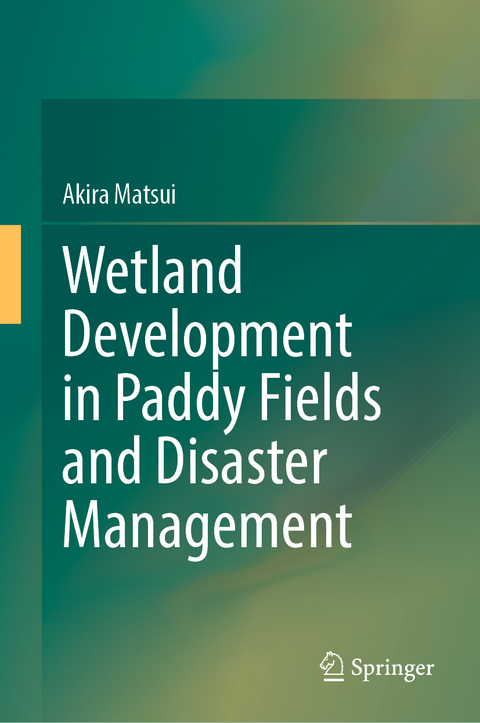
Wetland Development in Paddy Fields and Disaster Management
Springer Verlag, Singapore
978-981-19-3734-7 (ISBN)
This book proposes the use of green infrastructure to balance biodiversity conservation and disaster management. Paddy fields are one example of such infrastructure and are the focus of this book. In Japan, abandoned, once-cultivated land is increasing in the paddy fields due to the aging of society and recent depopulation. The author proposes to consolidate such lands and create wetlands because the paddy fields hold water during heavy rains, which prevents floods and protects cities. This is essential, considering that extreme weather conditions have increased the risk of flood damage in Japan. Not only do such wetlands hold water during the flood season, they also provide habitats for aquatic life and places for children to learn about the natural environment. In addition, fish farming in the wetlands will provide food for many people. The increase in water disasters associated with global warming is occurring not only in Japan but globally. The proposal presented in this book willhelp government officials around the world, especially those involved in urban and rural planning, to consider disaster management—an idea that will be welcomed by both engineers and biologists.
Akira Matsui is the director of the Matsui Store Co., Ltd. He completed the Graduate School of Life and Environmental Sciences, University of Tsukuba, where he obtained a Ph.D. in agriculture. His specialty is the study of ecological engineering in paddy fields and rivers. He is currently researching a regional natural ecosystem for conservation, carrying out interdisciplinary research that combines ecology and civil engineering and striving to return the results to the world. He is a member of the Ecology and Civil Engineering Society.
Part A Flood control.- Chapter 1 Characteristics of flood disasters.- Chapter 2 Flood control methods.- Chapter 3 Significance of flood disturbance.- Part B Paddy fields.- Chapter 4 Characteristics of paddy fields.- Chapter 5 Multiple functions of paddy fields.- Part C Case study of a river.- Chapter 6 Flood survey.- Chapter 7 Open levee survey.- Chapter 8 Survey of the river ecosystem downstream of a dam.- Chapter 9 Lake Biwa survey.- Part D Case study of paddy fields.- Chapter 10 Drainage canal system survey.- Chapter 11 Irrigation canal system survey.- Chapter 12 Fish-retreat ditch survey.- Part E Wetland development.- Chapter 13 Improvements to enrich paddy irrigation and drainage canal systems.- Chapter 14 Multiple effects of wetland development.- Chapter 15 Wetland management.
| Erscheinungsdatum | 31.08.2022 |
|---|---|
| Zusatzinfo | 162 Illustrations, color; 35 Illustrations, black and white; XV, 262 p. 197 illus., 162 illus. in color. |
| Verlagsort | Singapore |
| Sprache | englisch |
| Maße | 155 x 235 mm |
| Themenwelt | Naturwissenschaften ► Biologie ► Ökologie / Naturschutz |
| Naturwissenschaften ► Geowissenschaften ► Geologie | |
| ISBN-10 | 981-19-3734-6 / 9811937346 |
| ISBN-13 | 978-981-19-3734-7 / 9789811937347 |
| Zustand | Neuware |
| Haben Sie eine Frage zum Produkt? |
aus dem Bereich


